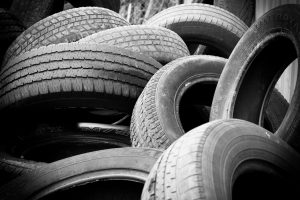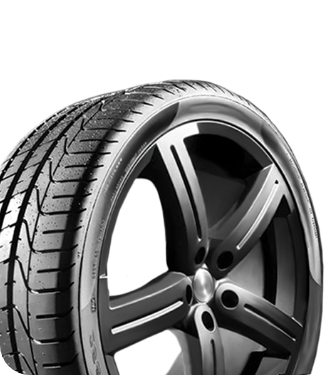

Breaking Down Tire Terminology: Understanding Key Terms
Tires |There’s a lot of terminology regarding tires, from their construction to their type to their maintenance. If you’re unfamiliar with tires or a new driver who wants to better understand these key terms, we can help! Below, we break down the tire terminology every driver should understand, including “tread,” “under-tread,” “sidewall,” “body plies,” and much more.
Why Understanding These Terms Matters
Understanding tire terminology is more than just learning jargon; it’s about making informed decisions that affect your driving experience and safety. Tires are what connect your vehicle to the road, playing a pivotal role in handling, braking, and overall performance.
Knowing these terms will help you choose the ideal tires for your vehicle and driving style, better maintain your tires, and better communicate with mechanics and tire specialists. Now, let’s break down the tire terminology and key terms every driver should understand.

Key Tire Construction Terms
Tread
The tread is the part of the tire that contacts the road. It features grooves and patterns that help with traction and water dispersion. A well-designed tread can significantly improve your vehicle’s handling and fuel efficiency.
Tread Depth
Tread depth is the measurement from the top of the tread rubber to the bottom of the tire’s grooves. Adequate tread depth is crucial for maintaining traction, especially in wet conditions. Most tires have wear indicators to help you know when it’s time for a replacement.
Sipes
Sipes are the small, thin slits within the tread blocks. They improve traction by providing more edges to grip the road. This is particularly beneficial in wet, snowy, and icy conditions.
Blocks and Ribs
Blocks are the individual sections of the tread pattern, while ribs are the continuous strips of rubber running around the circumference of the tire. Together, they contribute to the tire’s traction, stability, and noise levels.
Dimples
Dimples are small, round depressions on the tread surface. They dissipate heat, prolonging the tire’s life and improving performance.
Shoulder
The shoulder is the area where the tread meets the sidewall. It’s designed to provide additional traction when cornering and to protect the tire from impact.
Under-Tread
The under-tread lies beneath the main tread and provides additional cushioning and support. It absorbs shocks and impact, contributing to a smoother ride.
Sidewall
The sidewall is the outer part of the tire between the tread and the bead. It contains important information about the tire, such as its size, load index, and speed rating. The sidewall also contributes to the tire’s overall strength and flexibility.
Body Plies and Carcass
Body plies are layers of fabric, usually polyester or nylon, that form the tire’s structure. The carcass is the main body of the tire, made up of these plies. Together, they determine the tire’s strength, flexibility, and durability.
Bead
The bead is the part of the tire that sits on the wheel rim. It ensures a secure fit and maintains air pressure. Steel cables reinforce the bead for added strength.
Valve
The valve allows you to inflate or deflate the tire. It’s essential for maintaining the correct air pressure, which affects the tire’s performance and longevity.
Inner Liner
The inner liner is a layer of rubber inside the tire that retains air. It’s crucial for maintaining air pressure and preventing leaks.
Key Tire Type Terms
Rolling Resistance
Rolling resistance is the force resisting the motion of the tire as it rolls. Lower rolling resistance means better fuel efficiency. Tire manufacturers strive to balance rolling resistance with traction and durability.
All-Season
All-season tires provide reliable performance in a variety of weather conditions, including dry, wet, and light snow. They’re the most common choices for everyday vehicles.
Winter or Snow
Winter or snow tires have more aggressive tread patterns and softer rubber compounds compared to all-season tires. They offer superior traction in snowy and icy conditions, but they may result in reduced fuel efficiency on dry roads.
Performance
Performance tires are for high-speed driving, providing excellent grip and handling. These tires are more expensive and often seen only on high-performance sports cars.
Run-Flat
Run-flat tires have reinforced sidewalls that can support the weight of the vehicle even when there’s low or no air pressure. This allows you to continue driving for a short distance to find help in case of a puncture.

Key Tire Size and Identification Terms
Aspect Ratio
The aspect ratio is a figure that expresses the tire sidewall height as a percentage of the tire’s width. For example, an aspect ratio of 50 means the height is 50 percent of the width. The lower the ratio, the greater the handling—but the stiffer the ride.
Load Index
The load index indicates the maximum weight a tire can support. Choosing tires with the appropriate load index for your vehicle is essential to ensuring safety and performance.
P-Metric
P-metric is the standardized system for tire sizing used in the US. The “P” stands for passenger, and the numbers indicate the tire’s dimensions, load capacity, and speed rating.
Section Height and Width
Section height is the distance from the tire’s inner rim to the outer tread. Section width is the measurement across the widest part of the tire. These dimensions affect the tire’s performance, handling, and fitment on your vehicle.
Key Tire Maintenance Terms
Rotation
A tire rotation is when a vehicle’s tires are removed and slotted into different wheel positions. Tires wear down differently depending on their position on the vehicle, so rotations ensure even wear, prolong the life of the tires, and improve performance. Experts recommend rotating your tires every 5,000 to 8,000 miles.
PSI
“PSI” stands for “pounds per square inch,” which measures the air pressure inside the tire. Maintaining the correct PSI is crucial for safety, fuel efficiency, and tire longevity. Check your vehicle’s manual for the recommended PSI, and regularly monitor your tire pressure.
Maximum Inflation Pressure
This is the highest air pressure the tire can safely hold. It’s usually marked on the sidewall. Never exceed this pressure, as it can lead to tire failure.
Balancing
Tire balancing ensures the weight of the tire and wheel assembly is evenly distributed. Unbalanced tires can cause vibrations, uneven wear, and damage to your vehicle’s suspension. Balancing your tires whenever they’re mounted or rotated is essential.
Find Tires of All Sizes and Kinds at RNR Tire Express
We hope our guide has made it easier for you to understand the most critical terminology for tires. Knowing these key terms about your tires will, in turn, make it easier for you to know your tires’ strengths and weaknesses, how to maintain them better, and how to replace them.
When the time comes for a replacement, stop by RNR Tire Express to find tires in Lubbock and our many other locations across the country. We make it easy for you to find the tires your vehicle needs online or to consult with a tire expert if you need help. Stop by one of our shops or schedule an appointment today!





